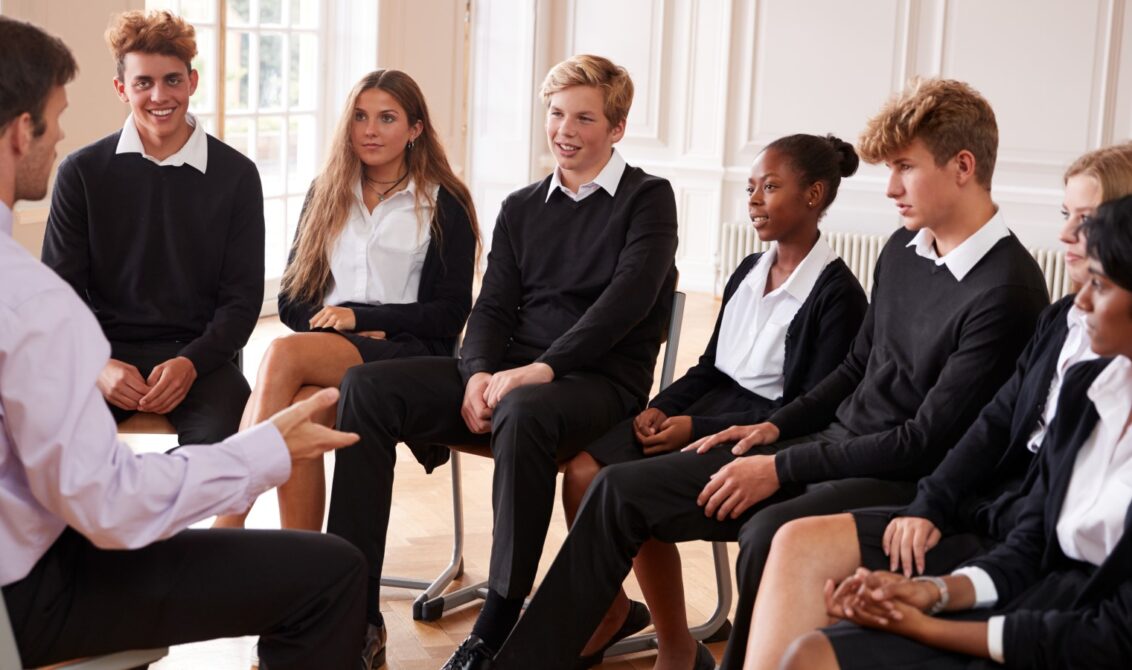
Young people are experiencing higher rates of depression and anxiety than ever before, triggered by the Covid pandemic, greater mental health awareness, and an increasingly uncertain world. So, how can teachers protect their students’ potential, support their emotional wellbeing and help them learn in safe, stable environments?
Promoting emotional regulation can help. Emotional regulation is a person’s ability to manage their emotional state in a healthy way. This matters in a classroom setting because it ensures that students focus on learning, and that precious teaching time is not spent on alleviating disruptive behaviours. Emotional regulation also contributes to better mood, improved flexibility in social situations, and even higher income for adults. In fact, in a 2014 study of college students, emotion regulation was the top predictor for life satisfaction.
So, let’s take a look at what exactly emotional regulation refers to, and how you can effectively integrate some useful strategies into your teaching.
What is emotional regulation?
Emotional regulation means being able to understand and control emotional responses in various situations. It includes a range of strategies and mechanisms that allow a person to manage both positive and negative emotions.
Good emotional regulation involves self-awareness, where a person recognises their emotional state, its causes, and potential consequences. In response, they can apply cognitive and behavioural techniques to regulate their reactions. Reframing negative thoughts, altering perspectives and practising mindfulness are examples of cognitive strategies. Seeking social support, doing exercise, and self care are behavioural strategies.
Research has repeatedly shown the crucial role of emotional regulation in mental health and interpersonal relationships. Poor emotional regulation is connected to anxiety and interpersonal conflicts, while robust emotional regulation fuels emotional resilience and adaptive functioning.
Emotional regulation is a dynamic process that has to be nurtured throughout life, and is impacted by a person’s individual experiences and social learning. Childhood and adolescence are life stages with lots of changes. Sturdy emotional regulation skills help your students to navigate these changes more easily.
So, how can you help them develop these skills? Let’s take a look at some strategies for different groups of students:
Emotional regulation for young learners
Teaching emotional regulation to students from a young age gives them the best chance of forming healthy emotional habits and response systems. Naturally, emotional regulation is a complex topic, but you can lay the foundation for emotional well being with even your youngest students.
The best way to approach emotional regulation with primary age students is to talk about feelings regularly – yours, theirs, and those of characters in the books that you read together. For example, reading a picture book together, you can ask questions about the characters like:
- How do you think he/she feels?
- Why do you think they feel sad/angry/happy?
- What makes you feel sad/angry/happy?
- What do you do when you feel like that?
- What’s a good thing to do when you feel sad/angry/happy?
Here, you’re modelling how students can name their feelings and identify characteristics that define those feelings.
Another important technique is to validate your students’ feelings. With primary-age students, you’ll probably be called on to negotiate conflicts between classmates and the difficult feelings that conflicts can provoke. Here, it’s important to resist the urge to fix ‘negative’ emotions. For example, if a student says, “I don’t have any friends to play with”, avoid saying things like, “What about yesterday when you were playing with Matthew?” or “Yes you do, everybody likes you!” Instead, here are some responses you can try:
- How does that make you feel?
- That sounds tricky. I understand you’re upset.
- Thanks for sharing with me. How can I help you feel better?
Giving your students the chance to share negative emotions will show them that you’re not afraid of their “big” feelings, and that you can work through these challenging emotions together.
Emotional regulation for older children
Older children may have more awareness of their emotions, but not necessarily the tools to name and react to them. So, roleplays can be a fantastic activity to help them understand their own feelings, as well as other people’s emotions. For example, roleplaying conflicts with their peers, having to share good and bad news with one another or apologising for mistakes. This will also have the benefit of getting your students used to being open about their feelings with one another and communicating how they feel in a group setting.
Another valuable strategy is one that you can put into practice during individual conversations. When older children vocalise their feelings of frustration toward another person, ask them to add “just like me” at the end of sentences that assign a motive or action to someone else. This practice fosters empathy and kindness, and encourages children to reconsider the story they’re telling themselves.
It’s also worthwhile helping older children to come up with coping strategies for times that they experience difficult emotions like sadness, loneliness, fear or frustration. This could include positive self talk, tuning into physical symptoms, doing physical activity, and writing about their feelings.
Emotional regulation for teenagers
Teenagers require more in-depth conversations and teaching around emotional regulation. Adolescence can be a very emotional time, with friendships in flux, lots of academic pressure, a newfound sense of self consciousness, and the desire for independence. So, the best place to begin the work of teaching your students how to manage their emotions? Creating a sense of community in your classroom. This reassures teenagers that they are in a judgement-free space and that they can openly share how they’re feeling if they want to.
However, sometimes your teenage students might not be particularly communicative about their feelings. You can still help them by introducing mindfulness practices like meditation, stretching and deep breathing to help them feel calm. Centre arts and crafts and sports to let teenagers manage stress and emotional fluctuations constructively and blow off some steam. Likewise, promote nutrition, sleep, exercise, and general self care that dramatically boosts emotional regulation.
And if your students do open up to you? They’re putting great trust in you, but sometimes it’s difficult to know how best to respond to this trust. Active listening is a good strategy here. It helps you to respond empathetically, connecting with your student and validating their feelings.
Learn more about active listening.
How to model emotional regulation
Ultimately, remember to model emotional regulation yourself. Pay attention to your feelings, give them space, engage in positive self-talk, journal, and carry out other control mechanisms. Tell your students how you deal with strong or unexpected feelings, and how your regulation has served you. Not only will you feel the benefits, your students will have a healthy example to follow.
Emotional regulation is just as crucial to educational curriculums as sciences, humanities, and arts. It gives students the skills to comprehend their inner emotional landscape, and the tools to navigate it appropriately. The process is lifelong, but starting early means students have a solid foundation to build on, can more easily thrive in adversity, and form deeper, lasting relationships with others – all of which accumulate to happier, healthier lives.
Subscribe to our blog
If you’d like to stay up to date with our latest articles, why not subscribe to our blog? You’ll get a fortnightly roundup of the articles you’ve missed straight to your inbox, plus links to free teaching resources.

